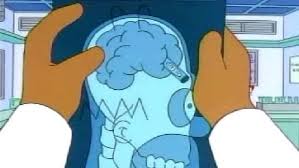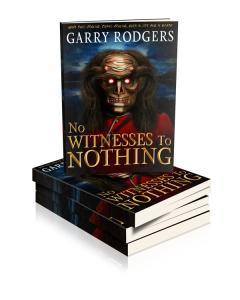 Here’s a preview of No Life Until Death, the sequel to the Amazon #5 BestSelling novel No Witnesses To Nothing.
Here’s a preview of No Life Until Death, the sequel to the Amazon #5 BestSelling novel No Witnesses To Nothing.
Chapter 1
Thursday, November 1st
9:40 am
SeaSpan Dockyard
Surrey – a suburb of Vancouver, British Columbia
Inspector Sharlene Bate of I-HIT, the Integrated Homicide Investigation Team, swung her unmarked car into a pot-holed lot on the south bank of the muddy Fraser River and slammed it in park. She jumped out, ducking yellow barrier tape and dashing through cold, pissing-down rain to the passenger side of a grey Chevy Impala – oblivious to desperate people doing desperate things.
“Jesus!” Corporal Jill Prunty looked at Bate’s forehead from behind the wheel. “What the hell happened to you?”
“Mixed it up with an asshole at Walmart.” Bate palmed her long, nasty gash. “Tell you later. What have you got?”
“Ah, call came at daybreak.” Prunty’s eyes stayed on Bate’s wound. “A dumpster-diver is gettin’ early dibs on the bins and sees a van back up to the jetty’s end. Driver gets out, opens his rear doors, and pulls out a package that’s like six feet long, floppy, and wrapped in white plastic. He’s got it strapped to an appliance dolly. Wheels it over and cuts it loose to the water. Guy puts his dolly back in the van and drives off.”
“Go on.” Bate pulled a notebook from her lusty-red trenchcoat.
“So buddy in the dumpster… some homeless dude named Dave… thinks it’s wrong so he checks it out. Well, the package snagged on a deadhead. You know them semi-submerged logs? Dave guesses it’s a body in the bag, so he runs for help.”
Bate put on glasses. “Good ol’ Dave.”
“Local PD responds. Between them and a tugboat crew, they fish it out. Sure enough.” Prunty pushed back unruly red hair. “A homicide file.”
“Like we need another.” Bate started scribbling. “Body is where?”
“In the recovery boat. Still shrink wrapped. Don’t know if male or female. We’re waitin’ for the coroner to get here.”
“Did Dumpster Dave get a decent look at our guy?”
“Yup. From probably ten feet away. He’s peeking outa the trash can like Oscar the freakin’ Grouch as the bad guy drives by.”
“Description?”
“Asian male. Approximately 40. Little shit around 5-3 or 5-4. Maybe 120-130 pounds. Short black hair. Clean shaven. Wearin’ dark clothes.”
“Asian. As in…?”
“Well, Rick Portman… Saargeant Portman, I gotta call him now since he got promoted, has Dave back at the shop going through photos and maybe get in front of the artist. Doesn’t sound like our guy is Chinese or Viet. More like Malaysian or Indonesian. Says he’ll have no problem IDing him.”
“Sounds like Dave is our star witness. How wrecked was he?”
“Seemed fine, but I figgered there’d be a credibility issue so I had him blow and give blood. Came back at .03 alcohol, but I’ll send for tox. Especially for crack and meth. Also his vision seems okay. I’ll get him to an optometrist just to make sure.”
“Jill.” Bate looked up and smiled. “You’re always thinking.”
Prunty blushed. Nice compliment. Especially from Sharlene Bate.
“What about the van?” Bate put pen back to paper.
“It’s a white panel thing with only driver windows. For sure a Dodge. Long wheel-base. And definitely propane fired, not gas or diesel. Dave says when you’re in bins all day long, you develop a keen sense of smell.”
“Classy,” Bate said. “Like a Surrey sommelier.”
Prunty read from her notes. “Says it’s an old carpet cleaner with a slider door on the passenger side. Company name’s painted over. Exhaust leaks and it runs rough at the idle. Also, there’s a crease down the bottom of the passenger side and a big crack across the windscreen starting from the left.” Prunty cranked up the defogger and raised her voice. “Knows there’s local plates, but can’t remember the number. Inside it’s got a bunch of welded brackets to tie things down and there’s a big, mottled paint-stain on the floor which dripped out to the back bumper. It’s kind of a sky-blue.”
“Hang on.” Bate stopped writing. “How’d he know what’s inside?”
Prunty grinned. “Dave knows this van. He stole it once to do B&Es.”
Bate rolled her eyes as her Blackberry toned. She checked call display. “Just a minute, Jill. It’s Emma. I have to get this.”
* * *
Hey Ems.
Hi Mom. Red Cross called. They need me Monday.
Okay, Sweetie. I’ve got a new case starting, but if I can’t go with you then Graham will take you or maybe Carolyn or Brian.
Just wanted to give you heads-up.
Thanks Em&Ems. Love you!
Loves you too, Mew.
* * *
“Couldn’t help hearing,” Prunty touched Bate’s arm. “Your daughter’s pretty rare, eh?”
“Yeah, a one in thirty-five million blood-type.” Bate was back writing.
“You guys are on standby with the blood bank to donate?”
Bate straightened up. “Yes. It’s tied to databases and cell-phone alerts. We’ve been expecting this one. It’s a planned procedure where they’ve identified a compatible recipient and need backup blood. But you never know when an emergency comes in and we have to go right now.”
“She must be a lifeline for someone like her.”
“You bet.”
“Quite a load for a thirteen year-old kid to take on.”
Bate breathed deep. “But I’d hope someone else would do the same for Emma if she needed a transfusion.”
“Yeah.” Prunty shuffled her hips that filled the seat. “What goes around, comes around.”
* * *
Tap. Tap. Tap.
Prunty hit the locks and thumbed the back seat.
Coroner Barbara McCormick wrestled through the driver’s rear door. “Goood morning, Jill and Inspector. What have you got for me on this crappy fall morning.”
“Got a floater for ya.” Prunty puffed her cheeks, winking at the coroner.
“Lovely.” McCormick pulled her clipboard from her scene bag. “Need its name, rank, and serial number.”
“Sorry, Barb,” Bate said, fingering long, wet, black hair. “Just a Jane or John Doe at this point. It’s zip-locked, like in a body bag, and we haven’t checked it over.”
McCormick’s brow raised. “You bagged it without me having a boo first?”
“No. It was fished from the river in some kind of a shrink-wrapped bag. We held it like that for you.”
“Most efficient. Are forensics clear for us having a little look?”
“It’s your show.” Bate looked over her specs and flashed a big, toothy smile.
* * *
Bate and Prunty shivered under a protesting umbrella on a tugboat’s greasy, wood deck as they hovered the mummy-like mass.
McCormick finished snaps with her digital Pentax. “This is a hospital shroud, not a body bag. Unusual.” She bent down, picking at the dripping-wet plastic. “Hmm. Bound by clear packing-wrap on the neck, waist, and ankles. Most unusual.”
Bate and Prunty watched. Their backs faced a leaf-splattering wind.
“I’ll open it for a peek at the face.” McCormick slit the wrapping with her box cutter. A dark, bearded mess stared from eyeless sockets framed in a white, plastic pool.
“More unusual all the time.” McCormick said. “Should be a most interesting post-mortem.”
She sliced down the shroud, leaving the neck wrap intact. Bare, brown skin shined from the neck and shoulders. McCormick exposed more. Surgical incisions showed, starting at the tip of each scapula, connecting at the sternum, and heading down the center of the chest. They’d been stitched with brown, butcher twine.
“Oh dear.” McCormick stood up. “Somebody’s already autopsied him.”
Get the #5 BestSeller No Witnesses To Nothing on Amazon at
http://www.amazon.com/No-Witnesses-To-Nothing-ebook/dp/B00AJZR28Y/ref=sr_1_1?s=digital-text&ie=UTF8&qid=1355431451&sr=1-1&keywords=no+witnesses+to+nothing












